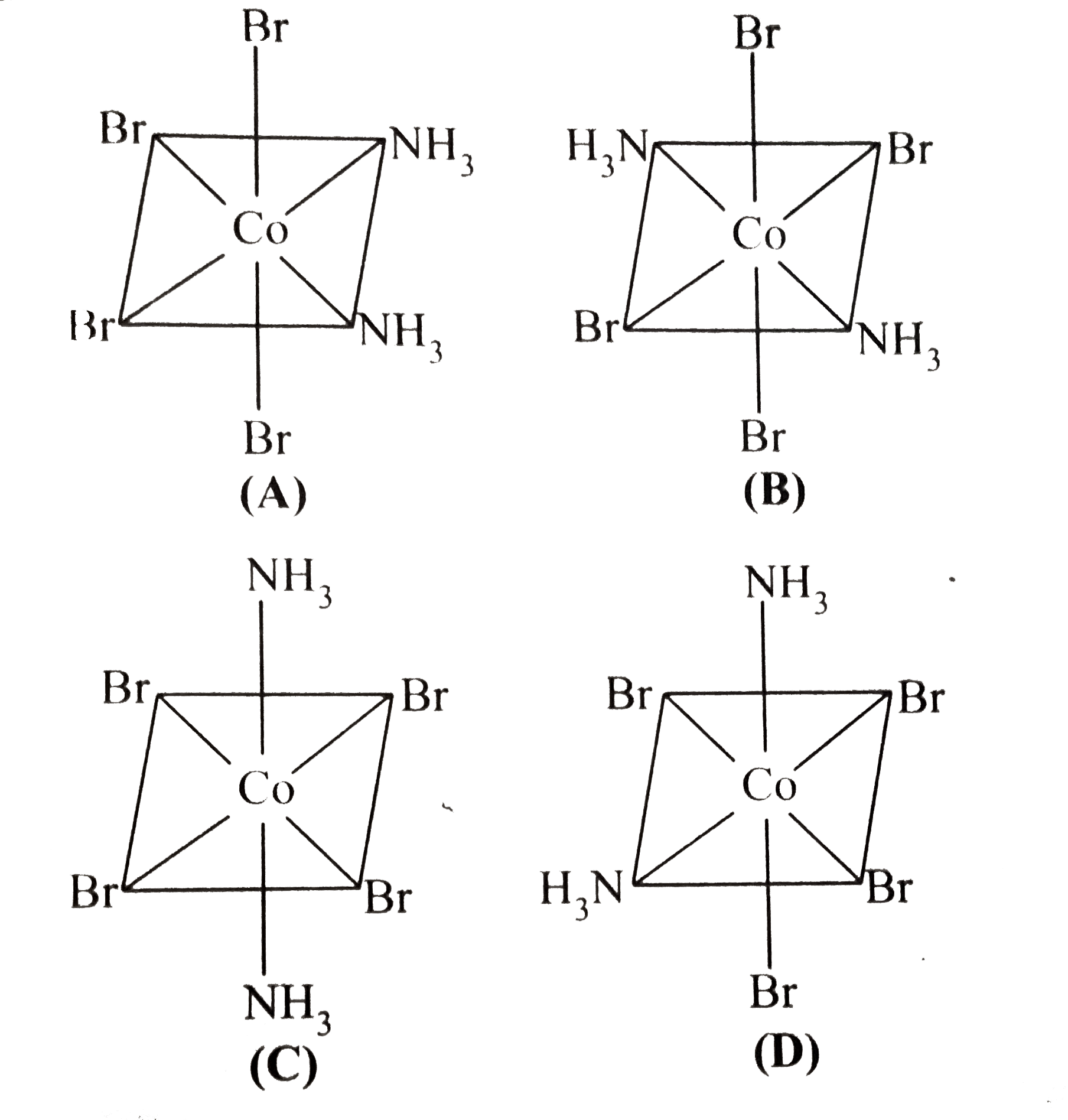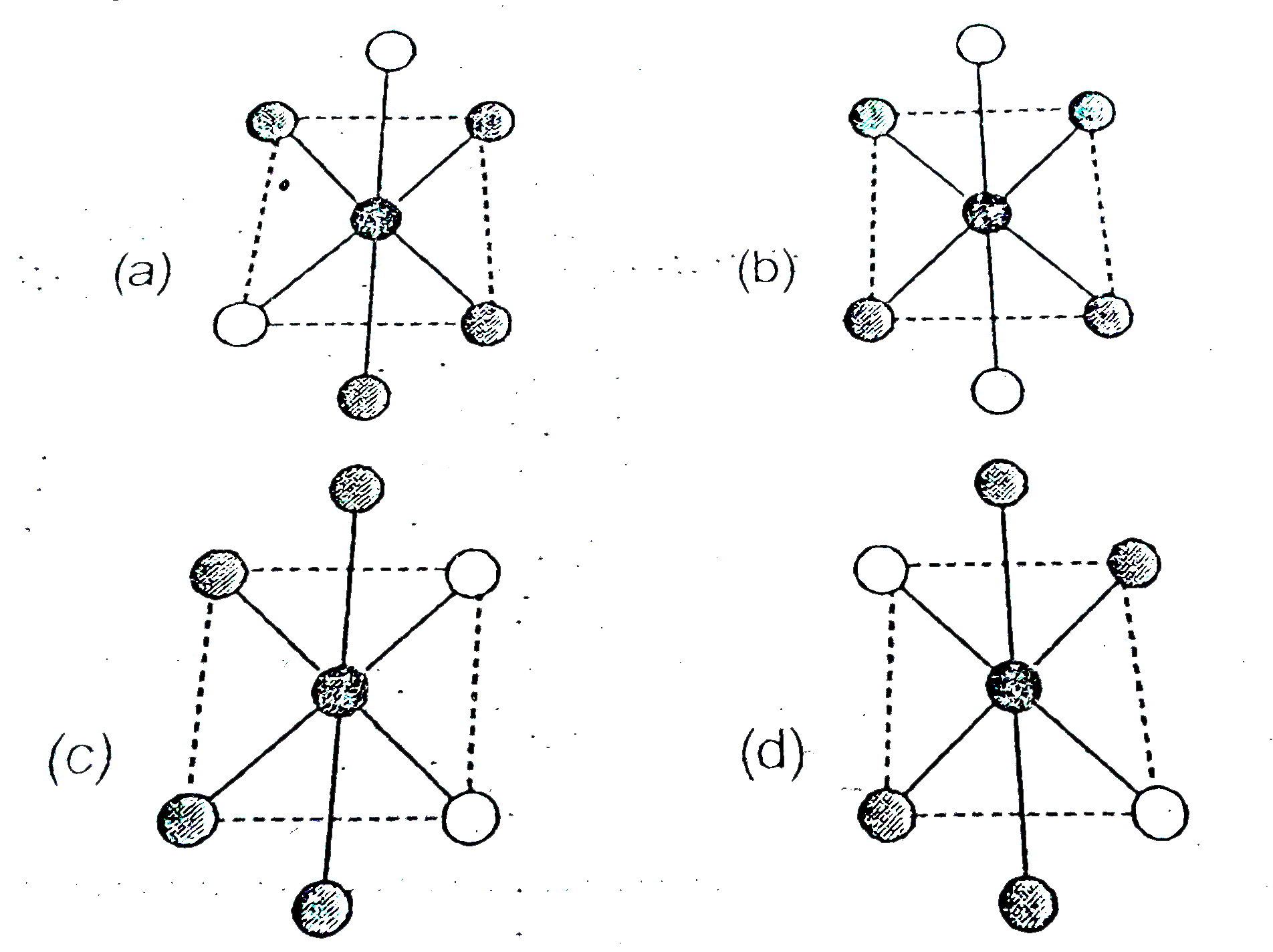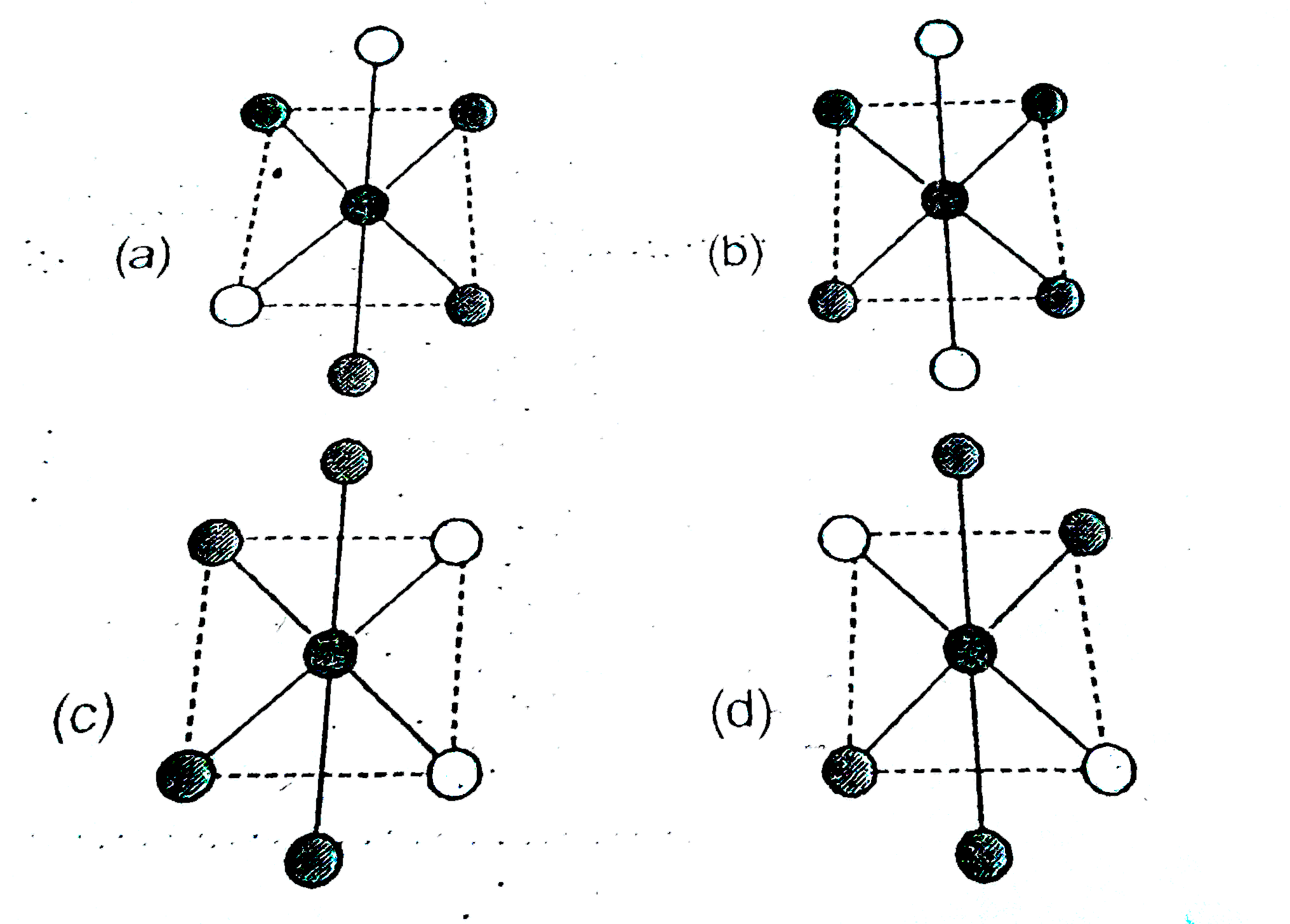Consider the following:
mark the correct option:
The correct Answer is:A
To solve the problem regarding the coordination compound (Co(CO3)(NH3)5)ClO4, we will go through the following steps:
Step 1: Identify the Coordination Number
The coordination number is determined by the number of ligands attached to the central metal atom. In this complex, we have:
- 5 ammonia ligands (NH₃), which are monodentate ligands.
- 1 carbonate ligand (CO₃²⁻), which is also a monodentate ligand.
Thus, the coordination number is:
Coordination Number=5(from NH3)+1(from CO3)=6
Step 2: Determine the Oxidation State of Cobalt
To find the oxidation state of cobalt (Co) in the complex, we can set up the following equation based on the charges:
Let the oxidation state of Co be x.
- The charge from the carbonate ion (CO₃²⁻) is -2.
- The ammonia ligands are neutral.
- The overall charge of the complex is +1 (since it is balanced by the ClO₄⁻ ion).
Thus, we have:
x+(−2)+0=+1
Solving for x:
x−2=1⟹x=3
So, the oxidation state of cobalt is +3.
Step 3: Calculate the Number of d-Electrons
Cobalt (Co) has an atomic number of 27, and its electronic configuration is:
(Ar)4s23d7
In the +3 oxidation state, cobalt loses 2 electrons from the 4s orbital and 1 electron from the 3d orbital:
3d6
Thus, the number of d-electrons in Co³⁺ is 6.
Step 4: Determine the Number of Unpaired d-Electrons
Since CO₃²⁻ is a strong field ligand, it causes pairing of electrons in the d-orbitals. The distribution of the 6 d-electrons in the presence of strong field ligands would be:
d-orbital filling: ↑↓↑↓↑↓
All six electrons are paired, so the number of unpaired d-electrons is 0.
Step 5: Determine the Hybridization
With a coordination number of 6, the hybridization can be determined as follows:
- For a coordination number of 6, the hybridization is d2sp3.
Summary of Results
- Coordination Number: 6
- Oxidation State of Co: +3
- Number of d-Electrons: 6
- Number of Unpaired d-Electrons: 0
- Hybridization: d2sp3
Final Answer
The correct option is A (Coordination number = 6, Oxidation state = +3, d-electrons = 6, unpaired d-electrons = 0).
The coordination number is determined by the number of ligands attached to the central metal atom. In this complex, we have:
- 5 ammonia ligands (NH₃), which are monodentate ligands.
- 1 carbonate ligand (CO₃²⁻), which is also a monodentate ligand.
Coordination Number=5(from NH3)+1(from CO3)=6
To find the oxidation state of cobalt (Co) in the complex, we can set up the following equation based on the charges:
Let the oxidation state of Co be x.
- The charge from the carbonate ion (CO₃²⁻) is -2.
- The ammonia ligands are neutral.
- The overall charge of the complex is +1 (since it is balanced by the ClO₄⁻ ion).
x+(−2)+0=+1
Solving for x:
x−2=1⟹x=3
So, the oxidation state of cobalt is +3.
Cobalt (Co) has an atomic number of 27, and its electronic configuration is:
(Ar)4s23d7
In the +3 oxidation state, cobalt loses 2 electrons from the 4s orbital and 1 electron from the 3d orbital:
3d6
Thus, the number of d-electrons in Co³⁺ is 6.
Since CO₃²⁻ is a strong field ligand, it causes pairing of electrons in the d-orbitals. The distribution of the 6 d-electrons in the presence of strong field ligands would be:
d-orbital filling: ↑↓↑↓↑↓
All six electrons are paired, so the number of unpaired d-electrons is 0.
With a coordination number of 6, the hybridization can be determined as follows:
- For a coordination number of 6, the hybridization is d2sp3.
- Coordination Number: 6
- Oxidation State of Co: +3
- Number of d-Electrons: 6
- Number of Unpaired d-Electrons: 0
- Hybridization: d2sp3
The correct option is A (Coordination number = 6, Oxidation state = +3, d-electrons = 6, unpaired d-electrons = 0).
Topper's Solved these Questions
- CO-ORDINATION COMPOUNDSBOOK - VK JAISWAL ENGLISHCHAPTER - CO-ORDINATION COMPOUNDSEXERCISE - LEVEL 3 (PASSAGE TYPE)
98 Videos
- CO-ORDINATION COMPOUNDSBOOK - VK JAISWAL ENGLISHCHAPTER - CO-ORDINATION COMPOUNDSEXERCISE - ONE OR MORE ANSWERS IS/ARE CORRECT
71 Videos
- CHEMICAL BONDING (BASIC)BOOK - VK JAISWAL ENGLISHCHAPTER - CHEMICAL BONDING (BASIC)EXERCISE - SUBJECTIVE PROBLEMS
54 Videos
- d-BLOCK ELEMENTSBOOK - VK JAISWAL ENGLISHCHAPTER - d-BLOCK ELEMENTSEXERCISE - ASSERTION-REASON TYPE QUESTIONS
32 Videos
Similar Questions
Consider the following complex [Co(NH3)5CO3]ClO4
The coordination number, oxidation number number of d-electrons and number of unpaired d-electrons on the metal are respectively
View SolutionConsider the following complex [Co(NH3)5CO3]ClO4
The coordination number, oxidation number number of d-electrons and number of unpaired d-electrons on the metal are respectively
View SolutionConsider the follwing complex:
[Co(NH3)5CO3]Br
The coordiantion number, oxidation number, number of d-electrons and number of unpaired d-electrons of the metal are respectively:
View Solution[Co(NH3)5NO2]SO4 shows
View SolutionConsider to following isomers of [Co(NH3)2Br4]Θ and answer the questions

Select the correct statement .
View SolutionConsider to following isomers of [Co(NH3)2Br4]Θ and answer the questions

Select the correct statement .
View SolutionConsider to following isomers of [Co(NH3)2Br4]Θ and answer the questions

Select the correct statement .
View SolutionWrite the IUPAC names of the following :
[Co(NH3)5Cl]SO4
View SolutionConsider the following isomers of [Co(NH3)4Br2]+ . The black sphere represent Co, grey spheres represent NH3 and unshaded spheres represent Br.

Which of the following are trans-isomers ?
View SolutionConsider the following isomers of [Co(NH3)4Br2]+ . The black sphere represent Co, grey spheres represent NH3 and unshaded spheres represent Br.

Which of the following are cis-isomers ?
View Solution
